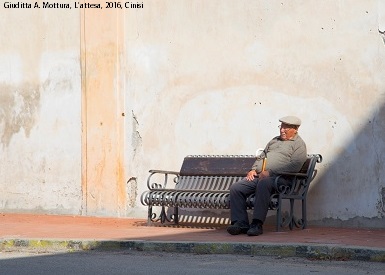Discourse and communication during COVID-19: a comparison of prime ministers’ statements announcing the first lockdown in Italy and the UK
DOI:
https://doi.org/10.54103/2035-7680/19112Parole chiave:
Occupational Health and Safety; Discourse Analysis; COVID-19; Comparative AnalysisAbstract
The outbreak of COVID-19 has produced serious consequences in social and economic terms. The speed at which this pandemic spread in the initial weeks led governments to take drastic measures in order to contain its devastating effects. To this end, lockdowns were imposed in many countries which lasted for months, affecting people’s lives in important respects. The way in which the general public was apprised of these restrictions deserves attention, as communication plays a major role at the time of implementing measures impacting on people’s freedoms. Based on these considerations, this paper provides a comparison of the rhetorical devices adopted by national governments to inform the public of the beginning of the lockdown. Specifically, the statements with which the Prime Ministers of Italy and the UK announced the implementation of lockdown measures will be examined, with a view to investigating their linguistic features in both Italian and English.
Metriche
Riferimenti bibliografici
Adam, Martin. “Persuasion in Religious Discourse: Employing Humour to Enhance Persuasive Effect in Sermons.” Persuasion in Specialised Discourses. edited by Olga Dontcheva-Navratilova, et al., Palgrave Macmillan, 2021, pp. 197-227.
Ädel, Annelie. “How to Use Corpus Linguistics in the Study of Political Discourse.” The Routledge Handbook of Corpus Linguistics, edited by Anne O’Keeffe and Michael McCarthy, Routledge, 2010, pp. 591-604.
BBC. Coronavirus: The World in Lockdown in Maps and Charts. www.bbc.com/news/world-52103747. Accessed 1 Dec. 2021.
Cambridge Dictionary (Online Version). Lockdown. dictionary.cambridge.org/ dictionary/english/lockdown. Accessed 7 Mar. 2021.
Caterina, Daniela. Struggles for Hegemony in Italy’s Crisis Management. A Case Study on the 2012 Labour Market Reform. Springer, 2019.
Crocchi, Camilla S., and Lena Dal Pozzo. “Framing Covid-19: A Comparative Analysis between Institutional and Press Communication in Finland and Italy in 2020.” Quaderni Di Linguistica e Studi Orientali, vol. 7, 2021, pp. 317-343.
Ehrlich, Susan. Representing Rape. Language and Sexual Content. Routledge, 2001.
Fairclough, Isabela, and Norman Fairclough. Political Discourse Analysis: A Method for Advanced Students. Routledge, 2012.
Fairclough, Norman, and Ruth Wodak. “Critical Discourse Analysis.” Discourse Studies: A Multidisciplinary Introduction, edited by Teun van Dijk, Sage, 1997, pp. 258-284.
---. New Labour, New Language? Routledge, 2000.
---. Language & Power. 2nd ed., Longman, 2001.
---. Critical Discourse Analysis. The Critical Study of Language. 2nd ed., Routledge, 2013.
Fernández Smith, Gérard, and Miguel Casas Gómez. “From Lexicon to Discourse in the Linguistic Expression of Taboo: Configuring New Social Realities.” Taboo in Discourse. Studies in Attenuation and Offence in Communication, edited by Eliecer Crespo Fernández, Peter Lang, 2018, pp. 25-52.
Fetzer, Anita, and Peter Bull. “‘Well, I Answer it by Simply Inviting You to Look at the Evidence’ The Strategic Use of Pronouns in Political Interviews.” Journal of Language and Politics, vol. 7, no. 2, 2008, pp. 271-289.
---. “Quoting Ordinary People in Prime Minister’s Questions.” The Construction of ‘Ordinariness’ across Media Genres, edited by Elda Weizman and Anita Fetzer, John Benjamins, 2019, pp. 73-102.
Hernández-Flores, Nieves. “The Use of Personal Deixis as an Ideological Instrument in Spanish Political Discourse.” Deixis and Pronouns in Romance Languages, edited by Kirsten Jeppesen Kragh and Jan Lindschouw, John Benjamins, 2013, pp. 171-188.
Kranert, Michael. Discourse and Political Culture. The Language of the Third Way in Germany and the UK. John Benjamins, 2019.
---, et al. “COVID-19: The World and the Words Linguistic Means and Discursive Constructions.” DiscourseNet Collaborative Working Paper Series - Special Issue: Discourse Studies Essays on the Corona-Crisis, vol. 2, no. 9, 2020. www.frontiersin.org/articles/ 10.3389/fcomm.2020.593325/full. Accessed 10 Sept. 2021.
Lindqvist, Annelie S., et al. “Communicating About COVID-19 in Four European Countries: Similarities and Differences in National Discourses in Germany, Italy, Spain, and Sweden.” Frontiers in Communication, 2020. www.frontiersin.org/articles /10.3389/ fcomm.2020.593325/full. Accessed 10 Sept. 2021.
Lorenzetti, Maria Ivana. “A Cross-linguistic Study of New Populist Language.” Doing Politics: Discursivity, Performativity and Mediation in Political Discourse, John Benjamins, 2018, pp. 153-177.
Machin, David, and Andrea Mayr. How to Do Critical Discourse Analysis. A Multimodal Introduction. Sage, 2012.
Pavlidou, Theodossia-Soula. “Constructing Collectivity with ‘we’.” Constructing Collectivity. ‘We’ Across Languages and Contexts, edited by Pavlidou, Theodossia-Soula, John Benjamins, 2014, pp. 1-22.
Reyes, Antonio. Voice in Political Discourse: Castro, Chavez, Bush and their Strategic Use of Language. Continuum, 2011.
Simpson, Paul, et al. (editors). Language and Power. A Resource Book for Students. 2nd ed., Routledge, 2018.
Strunin-Kremer, Neta. “Political Concepts and Vagueness: Cyberattacks in the Israeli Political Discourse.” Concepts at Work: On the Linguistic Infrastructure of World Politics, edited by Piki Ish-Salom, Michigan University Press, 2021, pp. 118-136.
Trnka, Susanna, and Sharyn Graham Davies. “Blowing Bubbles: COVID-19, New Zealand’s Bubble Metaphor, and the Limits of Households as Sites of Responsibility and Care.” COVID-19. Global Pandemic, Societal Responses, Ideological Solutions, edited by Michael Ryan, Routledge, 2021, pp. 167-183.
van Dijk, Teun. “Principles of Critical Discourse Analysis.” Discourse & Society, vol. 4, no. 2, 1993, pp. 249-283.
---. “Discourse and Knowledge.” The Routledge Handbook of Discourse Analysis, edited by James Gee, Michael Handford, Routledge, 2013, pp. 587-603.
Wales, Katie. Personal Pronouns in Present-day English. Cambridge University Press, 1996.
World Health Organisation. WHO Director-General's Opening Remarks at the Media Briefing on COVID-19 - 11 March 2020. www.who.int/director-general/speeches/detail /who-director-general-s-opening-remarks-at-the-media-briefing-on-covid-19---11-march-2020. Accessed 12 Nov. 2021.
Dowloads
Pubblicato
Come citare
Fascicolo
Sezione
Licenza

Questo articolo è soggetto a licenza Creative Commons Attribution-NonCommercial-NoDerivatives 3.0 International License.




